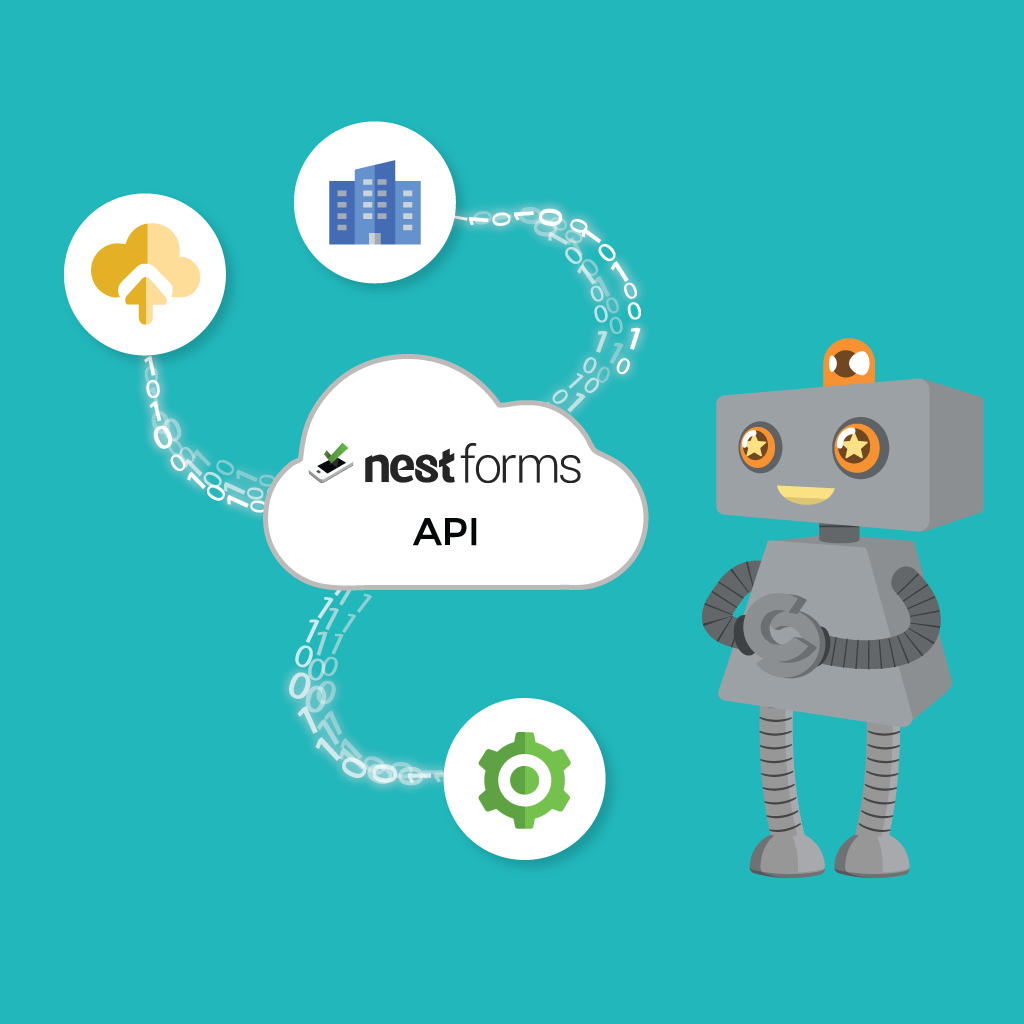What is an API?
API is an acronym for Application Programming Interface, which is a software intermediary method that allows two applications to communicate with each other.
Come again! Sorry... what! ‘What is an API integration?’ is commonly asked within the API world which apparently now even has its own economy. Ok now I'm not the world's most IT savvy tech geek. Part of my job with NestForms is to learn more about the various technologies that are being used on our platform and today I am learning why clients are using our API and how it will support your business. During my research, some of the sites I've come across go to great lengths to explain what an API is and does. I've also found a few that manage to sum up the definition in a nutshell. There are also some simple examples to describe how an API integration functions.
One common example is the diner in a restaurant, the waiter comes and he takes the customers order. The waiter then takes the diner’s order to the kitchen where it is made up. Enter the waiter again to take the dish to the table. In this case the waiter is the ‘middleman’ or interface if you like, assisting in making the service smooth and efficient.
API integration allows different software systems to communicate with each other seamlessly and rapidly. The API is a gateway through which this process takes place.
In the tech world today efficient systems communication is crucial for business, commerce and consumer confidence. APIs are working all across the digital spectrum. If you go to book your cinema ticket online. If you have booked your flight ticket using an online travel service. When making a purchase from an online shop, APIs are working behind the scenes for all sorts of everyday services.

Benefits of using an API
When trying to understand how an API can be of benefit to your business it might be easier to think of it in terms of your business process.
Automation
This is the process of removing the need for manual intervention. A long time ago when online booking began to be available, the individual user would have to search through each individual website for example when booking a flight or hotel. Nowadays by using a website such as Booking.com you can simply enter your destination, select the dates and click on search. You will receive details of all the hotels that are available in your chosen location. In this case Booking.com is talking or communicating with all these hotels through an API. This allows Booking.com to check how many rooms are still available at a specific time as well as allowing booking.com to book a specific room for a client that just ordered online via the website. This is achieved by communication between computers via the API in a fraction of a second and there is no need for anyone to call each other and confirm availability.
Integration
API integration allows different platforms to communicate and share information with each other. Web APIs connect or communicate between applications and services or different platforms such as social networks, games, databases and devices. This guarantees that data can flow efficiently from all kinds of business organisations and consumers. Content can be embedded within an API from any application or site without difficulty. This means that data delivery is fast and creates a better experience for the end user.
To understand the real world of API integration, consider the likes of UBER, NETFLIX, SPOTIFY or any site that, once loaded, gives you the option to log in or continue with your own Facebook or Google identity. In this case, these services are sharing an agreed selection of users’ information. This constitutes an agreement between these services and either Google or Facebook that has already happened, which is why it’s letting you sign up with Google / Facebook.
Data sharing / collection
Using APIs data sharing and collection can be carried out seamlessly and in real time. APIs can connect between applications, consumer services and various other platforms. Faster data sharing can benefit and improve any business model allowing more efficiency with process and with increased tempo. This in turn creates better business acumen, customer and supplier confidence.
Security
Organisations require authorisation to prove they are who they say they are. NestForms then provides each organisation only responses that are relevant to them. NestForms are using the oAuth 2 standard for authorisation. All communication is done via HTTPS so all data is securely encoded during the transfer.
Time and Efficiency
When a retailer is using an internal API, operational efficiency and customer service are greatly improved and can lead to increased sales and an enhanced reputation with their customers. Services become smooth and streamlined for example with a customer being able to choose home delivery or click and collect using their device as opposed to an in store visit.
Improved services: Greater communication between platforms and devices, services and consumers creates a customer experience that is both fast and efficient. A customer can quickly find out if a product is in stock at another store other than their local outlet. This can affect everything from sales output to customer satisfaction. The faster a service response the more enhanced a reputation will become. When a service is fast and efficient people will tend to go back to that provider based on ease of use and response times. APIs drive many of the financial transactions applications and/or subscription billing applications. This of course requires that transactions should be smooth and above all secure.

How NestForms API integration can make your life easier?
By using API integration through NestForms you can benefit your business in many ways. Streamlined data sharing and collection can support all of our customers business requirements.
NestForms already closely integrates with third party APIs that allows the transfer of data into other services (e.g. Google Drive, Microsoft Sharepoint and OneDrive, DropBox) to allow for easier data transfer.
Fully customised API solution benefits
- If you have your own internal system or alternate platform, you can connect to NestForms using API and transfer NestForms data into your internal system
- If you want to provide your own branded version of the NestForms web fill within your intranet, you can take advantage of the remote login API and display an iFrame in your intranet.
- If there are some specific actions you need to apply to your data outside NestForms, then you can use the API to retrieve the responses into your internal Database and can then apply your custom actions within this external database.
- If you need to create specific charts or grouped results outside the charts provided by NestForms interface, you can export data and create these views also.
If you are interested in learning more about the NestForms API, have a look at our API Help page
You can find out more about the NestForms mobile survey app on the NestForms website. You can also view a short video on how the app works on the homepage.
You can also learn more on how to use our formbuilder by getting a better understanding of NestForms
Finally, if you would like a chance to try out the NestForms mobile form app, you can sign up for free and your first two weeks begin with a free trial of the system as a premium user.






